It can be tough being the person responsible for creating customer-centric change in an organization. You’re tasked with running a customer journey workshop and you’re unsure how to go about it. We’ve got you covered. With over 20 years of combined experience, Custellence and Ulrika Ewerman will help you share your knowledge and prove the value of customer-centricity.
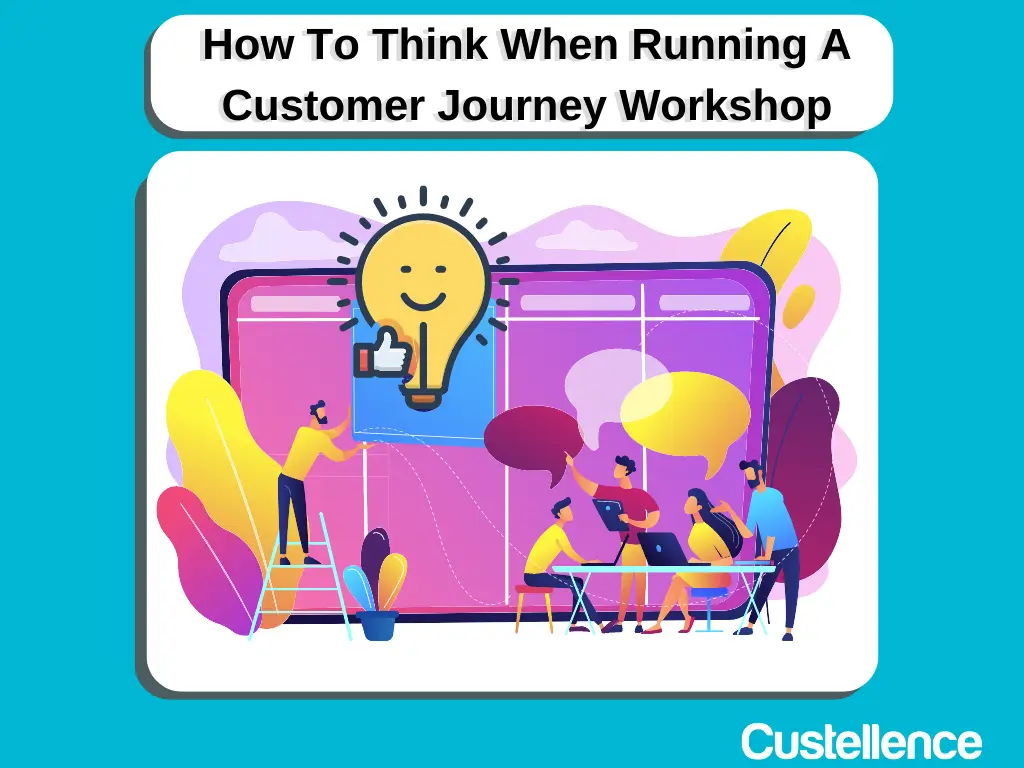
The truth is that the actual value of a customer journey workshop comes from the approach. You are not going to change the organization in one workshop. But, you can start the change by focusing on how people think about customer experience. Because these workshops are most effective as a pedagogical tool, you need to play the role of a mentor. They’re to inspire people to think customer-centric and to work cross-functionally.
Easier said than done. So how do you do it?
We spoke to Ulrika Ewerman, an expert in Customer Experience, on how you can run an impactful customer journey workshop. Before we get into that, there are two principles for you to consider.
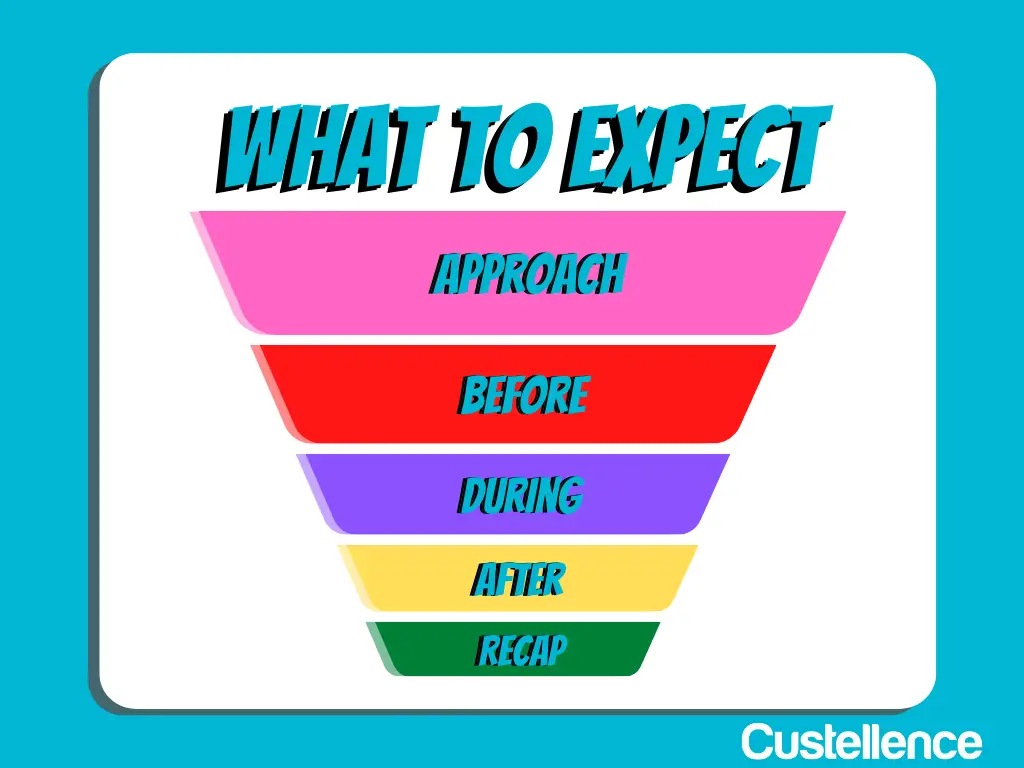
First, you should make the workshop as neutral as possible. Use an idea that everyone can relate to while doing the workshop, and then in The Application, connect everything back to the business. What we mean by that is if your company sells skis, don’t base the workshop on the customer journey of a skier. Instead, take an example everyone can relate to, such as renting a car, and then take the lessons and put it into context after. We’ll explain more about this in a little bit.
Secondly, remember that it’s necessary to think about the entire customer journey when planning. Often, businesses tend to focus on the middle of the customer’s journey, the “During”, when the customer is engaging with the business. But before stepping into your store or doing any onboarding for your service, there is a long process that a customer takes. From discovering a need to buying intention, being aware of this in your planning can help you shape how you prepare your workshop.
Before
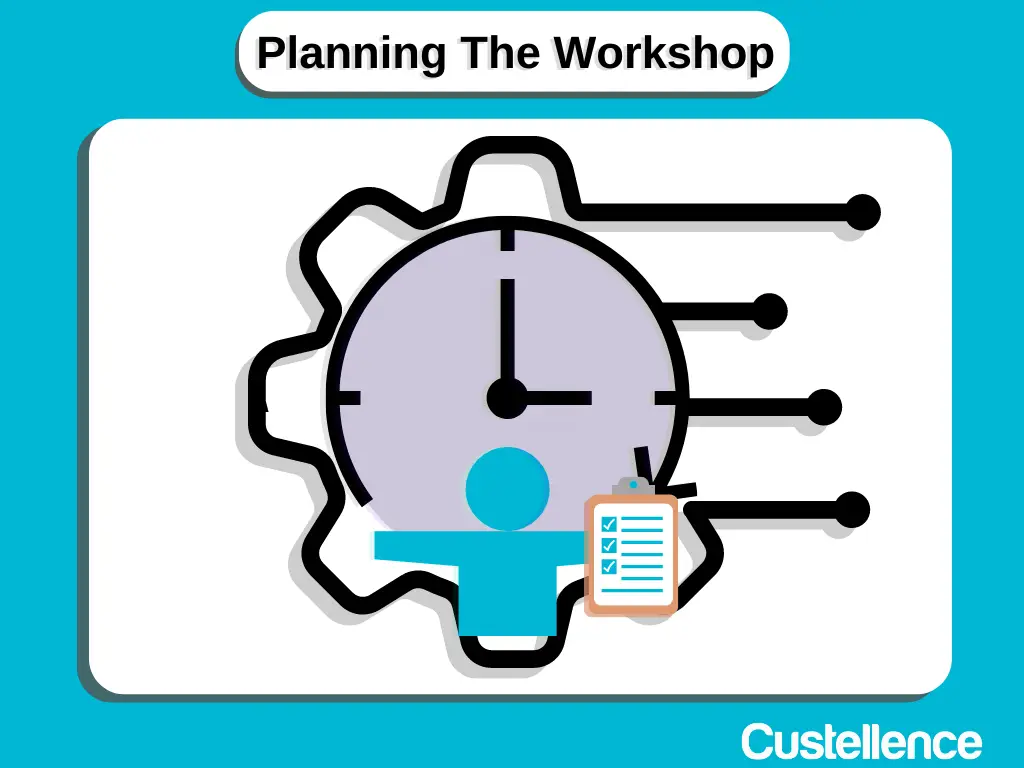
The planning stage is where you set yourself up for success. There are so many details, from the big and obvious, like the ones we’ll cover, to the finer points that relate specifically to your organization. Probably the most crucial factor to think about is your time management. You are in charge of the workshop, and it will follow the pace you establish.
It might happen that discussions are going so well, or ideas are flowing so naturally that you don’t want to stop the magic in the moment. You have to be ready to either adapt and spontaneously rearrange your plan for the workshop or interrupt to blow the final whistle to move on. No matter what, be a strict clock watcher. Time is your most important asset when running a customer journey workshop. Keep an ear to the crowd to see what is happening in the room, and trust your instincts because you know best.
Who to invite?
When it comes to who you should invite, the best piece of advice is to invite key stakeholders in your customer’s journey. The name of the game is to push the cross-functional perspective. That includes any department in your organization that you aren’t sure if you should bring in or not. The moment you invite a different department is the moment you begin to break down the silo walls. For manageability’s sake, you should look for no more than 30 people. You don’t need the whole department, 3 to 5 people from each will do.
What length of time should it be?
Ideally, aim for a 4-hour workshop with a few breaks somewhere between. But you can make it work with a 2-hour workshop, just no less. Not only do you want time to go over the concepts and their application, but you also want to leave room for discussions, questions, and feedback.
How to get people engaged?
It’s a tough pill to swallow, but there is no guaranteed way to ensure equal participation from everyone attending. But, by captivating attention and piquing interest, you will inevitably create engagement. Sharing your passion for CX will create a spillover effect on anybody attending.
Also, set up an established space for people to write to you about their thoughts, feedback, and questions to follow up on afterward. People want to contribute and share their knowledge, so give them a chance to do so.
During
Before we go too far into the “During” section, it’s important to note that there is no exact way to do a workshop. Every one of them is different because every organization is different, and every person running a workshop is different. There’s no one like you, so take these general guidelines and run with them as you see fit. Remember to add breaks to give people’s brains a chance to rest and stay focused.
We’ve broken down the “During” phase into three separate parts: The Presentation, The Exercises, and The Application. They make up the core of this teaching method. Give them the ideas, then give them a chance to put the ideas into practice. And then give them the context to how they can apply it to the organization.
The Presentation
There’s a wide array of ideas and information you might want to communicate in your presentation. Here are a few examples that are great topics to cover.
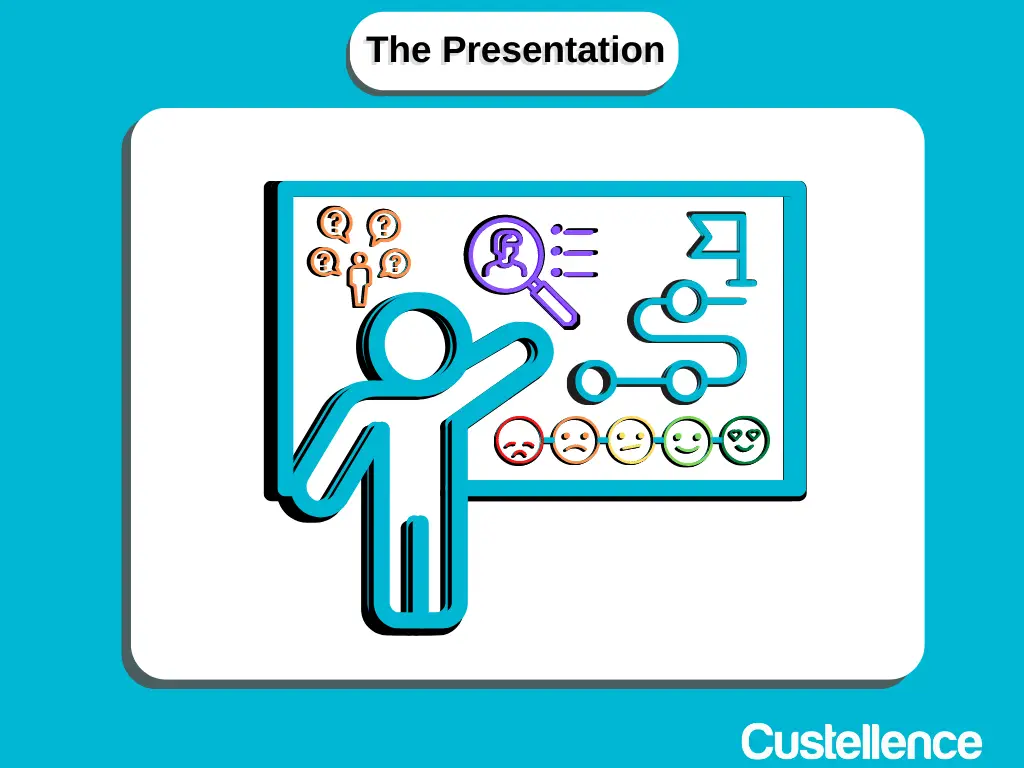
A good exercise, to begin with, is to help get people into the mentality of understanding customer experience. Do this by taking 2 minutes and asking people to draw a cell phone. After that, take another 2 minutes and ask them to draw a cell phone subscription. Enjoy the confusion on their faces. Customer experience is not always what is tangible or visible. Thinking like a customer is more than just touchpoints with your organization, it’s every part of your product or service that the customer experiences.
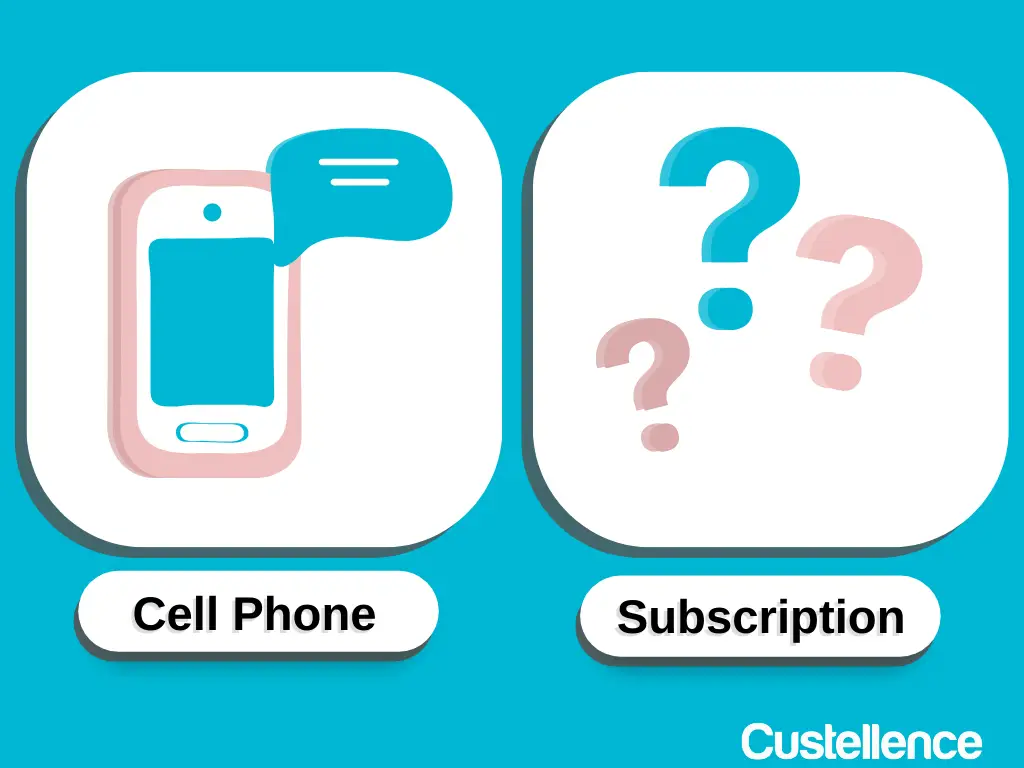
The Peak-End Rule To keep it very short, the Peak-End Rule is the cognitive bias to do with how we remember past events. Where the peak moments, both positive and negative, and the very end of events are the most memorable. Keeping this in mind can help you understand where you should look to improve your customer’s pain points. For an in-depth understanding of the Peak-End Rule, check out The Decision Lab’s article on How Do Our Memories Differ from Our Experiences?
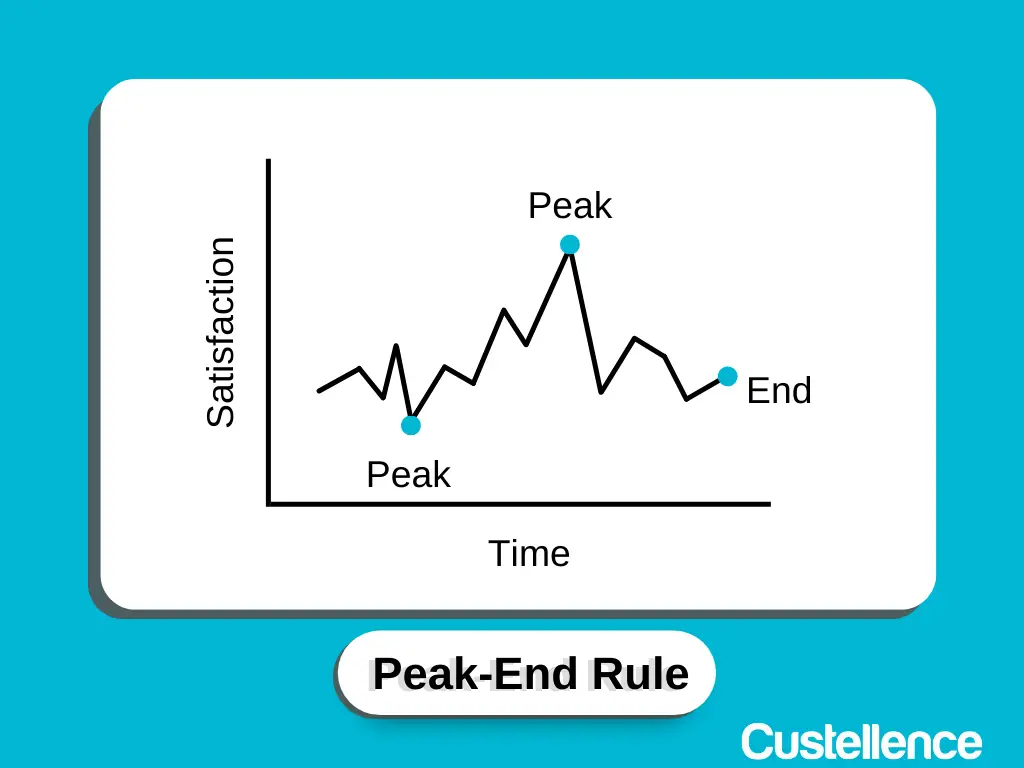
Explain the basics of a customer journey map and the template you plan on using. This could include ideas like the customer phases, their steps, needs, emotional curve, potential opportunities, and ideas for solutions. You can also use Custellence’s Ideation Journey Map Template that describes those ideas in more detail.
But there are other great digital alternatives for running a customer journey workshop that might feel a little more intuitive. For example, Mural’s Customer Journey Map Template or Miro’s Stickies Packs Template. For physical templates, print out blank customer journey maps or prepare stacks of post-it notes in a variety of colors and a bucket full of writing utensils.

The Exercises
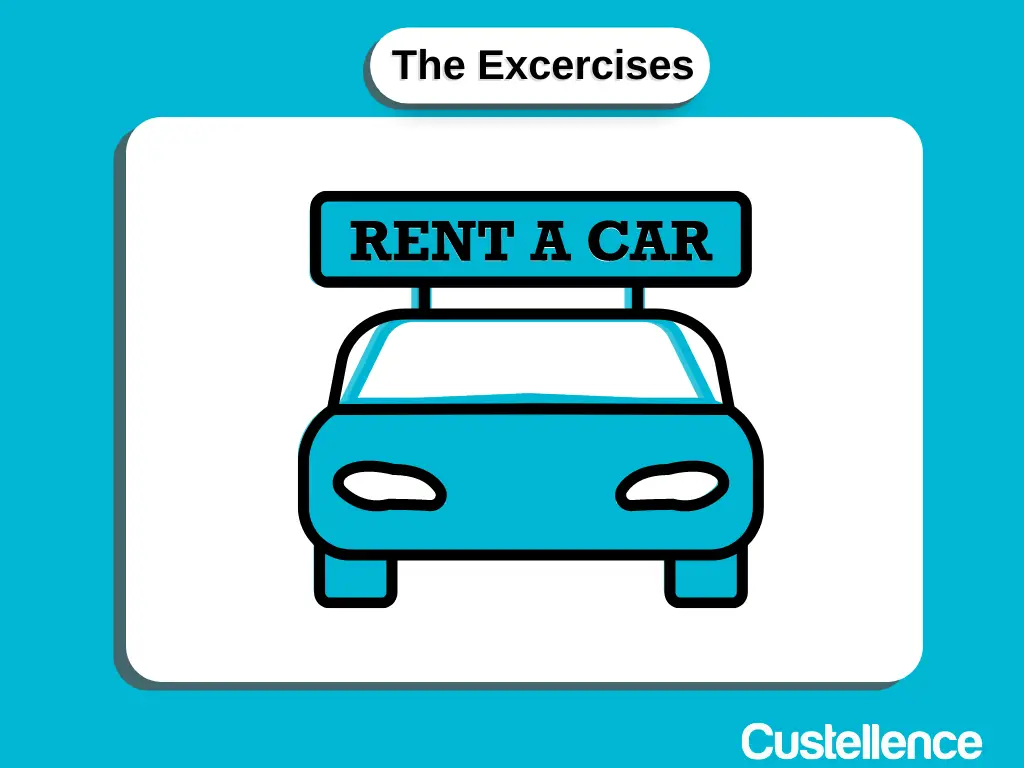
We’ve talked about making the workshop as neutral as possible and the example of a rent-a-car customer journey map. You don’t need to use this example but make sure the one you use is common enough that most people can connect with it.
- Split up into groups of no more than five people per group, making sure to have every team member from a different department. Have the groups prepared and numbered before the workshop to help facilitate clock management.
- Give them 10 minutes to focus on the customer’s phases, their journey, their needs, and their emotional curve. Encourage working as a team and sharing perspectives.
- After that 10-minute mark, time for some real fun. Appoint one member from each group to roleplay and become the customer and send them to a new group. Give them 5 to 10 minutes to go to the new group and discuss their customer journey. Here is the time for groups to try some customer research face to face.
- Between 5 to 10 minutes, when you determine it’s right, send the customer back to their original group. Now give the groups 10 minutes to use their new customer insights. This time, it’s to make changes to their customer journey map, focusing on potential opportunities and ideas for creative solutions to pain points.
- Finally, give each group 5 to 10 minutes to present their customer journey and one solution for a pain point they discovered in their journey mapping. This time is also when other members can ask questions and give feedback to each group presenting.
Again, the key is to be strict with time and maintain the flow of the workshop. There will be a lot of discussions, learnings, and figuring it all out. But by this point in the workshop, you’re probably rolling with a head of steam.
The application
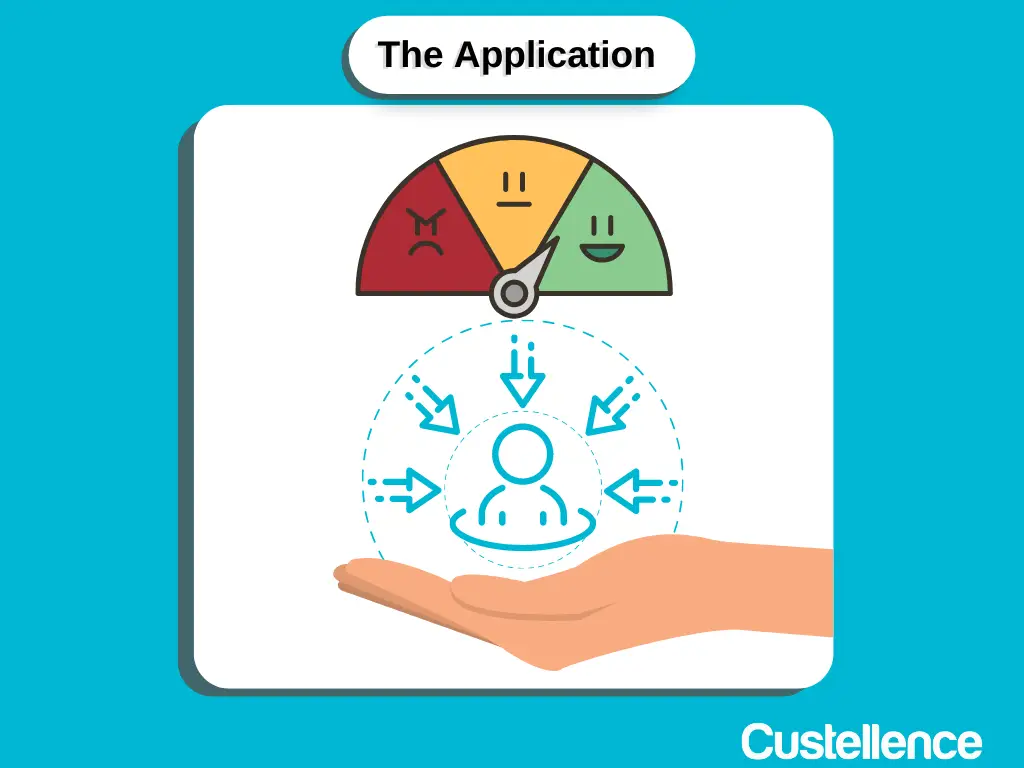
The final task is getting people to understand the context of the exercises they’ve done in the workshop. This part of the workshop is where you really plant the seeds of change and give them nutrients to grow.
- Review the KPIs of your organization and discuss the business goals, relating them to your company’s existing customers’ journey. Talking about your customers’ journey and their emotional curves can help shine a light on where to start. Where’s the biggest bang for your buck that aligns with KPIs and goals? Some KPIs can be too tough to achieve or not customer-centric focused. Think about where you can make the biggest impact by doing something attainable and actionable to give you an example to turn back to show a success story.

- Going back to what we mentioned in the Before section, this is when you bring in the customer. Whether it’s physically bringing customers in to talk about their experiences, either by using video recordings of customers or whatever you decide. Anything that brings the customers in and puts them on center stage. Use whatever customer research you have to help get their voices heard. The more you have and can use, the better!
- Now that you have heard both the customers’ voices and the business KPIs, here is where you collectively pick one customer journey and openly discuss why you should prioritize it. Talk about what would stop you from doing this and who to involve in the following steps.
Keep in mind that the purpose of this part is not to create the hallelujah solution to your customer’s pain points. The idea here is to show how to take the concepts and exercises you’ve done and apply them to your organization. The point is to start the snowball rolling down the hill. It will begin to grow as soon as you mention something or talk about it.
Ahead of finishing the workshop, be sure to leave your contact information for everyone to reach out to you afterward. Hopefully, you’ve accomplished the most impactful thing you can do with a customer journey workshop. You’ve piqued curiosity and got them thinking about customer-centricity. Be sure to give people a way to get in touch with you to follow up with any questions they might think of after the fact.
Extra advice for the spoiled
A few extra tidbits for those that have the luxury and ability to do so. If you can, get a second person to help moderate the workshop. It can help during the exercises to have another set of ears to increase the equal participation of every group member. And if you have the space for it, when you separate people into groups, give them a different room to work on their rent-a-car journey maps. A change of environment can do wonders for learning brains.
After
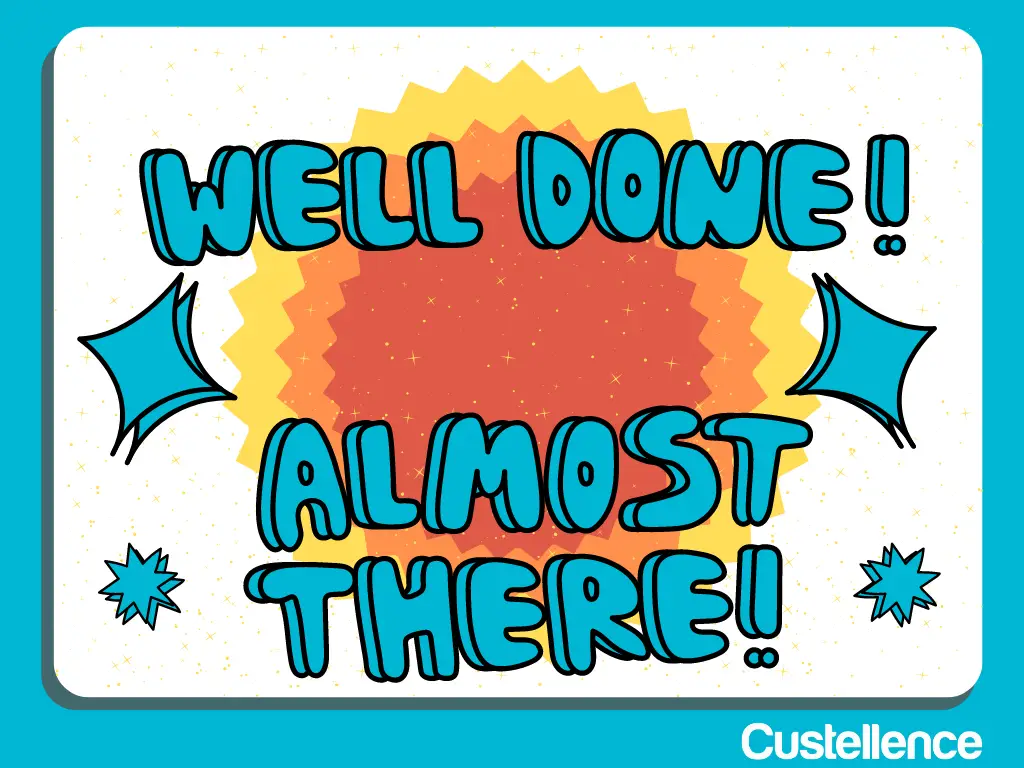
The workshop might be over, but your job coaching isn’t. It probably never will be, but that’s the exciting part! The field of Customer Experience is growing and expanding as fast as the universe itself. Something you should always do after the workshop is to send a summary of the key takeaways. As well as any photos that you took, and answer any questions that were left for you.
Quick Recap
Running a successful customer journey workshop isn’t about solving the problems. It’s about getting people to think about the customer’s perspective and seeing the value in cross-functional teamwork. You’ll have the most long-term impact if you approach the workshop as a mentor rather than a miracle worker. Changing how people think and getting them talking about the customer is the first step in creating real organizational change.
Building a customer-centric organization takes time, so be patient. You can’t pick the fruits of your labor without first sowing the seeds for success. Here’s a quick recap of Ulrika’s top 5 tips for how to think when running a customer journey workshop.
- Remember to think of the whole journey
- Make the exercise example journey as neutral as possible
- Have time planned for presentations, questions, and feedback
- Roleplay as the customer during the exercise
- Bring customers in any way you can. Something is always better than nothing

Ulrika Ewerman is an Independent CX (Customer Experience) Advisor and expert in CX Management and CX Strategy Execution. Over the past 20 years, she’s been working globally, creating impact through CX Methodology, Management, Organization, and Execution. She holds an MFA in Design and has headed senior management roles at Veryday, McKinsey, and Volvo Car Mobility.
Today she supports organizations and brands to unlock the CX potential to become truly customer-centric, with a human-centered, possibility-driven, and iterative approach. Find more about Ulrika on her LinkedIn profile.
By Ulrika Ewerman


